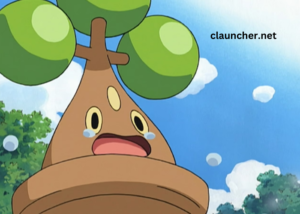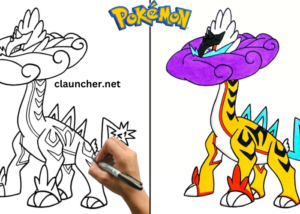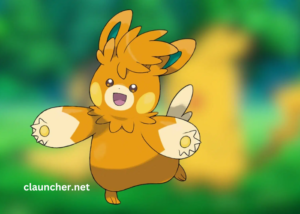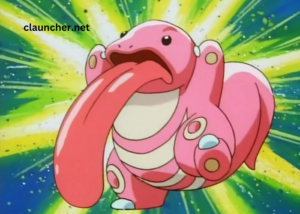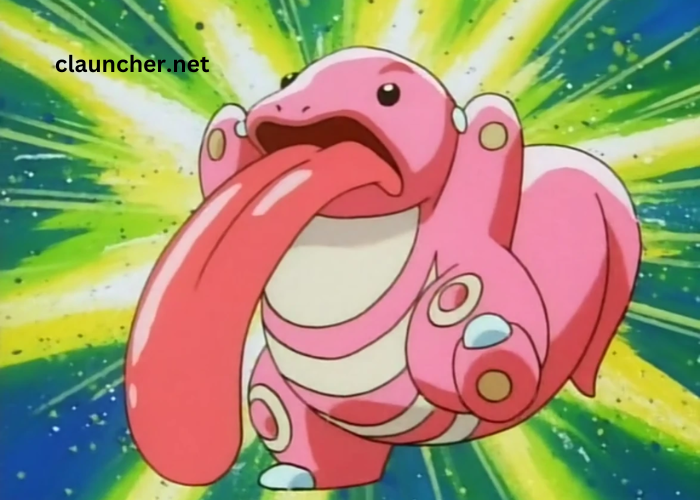
Lickitung is a fascinating Pokémon that stands out due to its unique and distinct characteristics. Known for its long, flexible tongue, Lickitung uses its abilities to interact with its environment, including its diet. One of the most interesting aspects of Lickitung’s feeding habits is its reliance on Bug Pokémon as a primary food source. While Lickitung is capable of consuming a variety of food items, it has a particular affinity for Bug-type Pokémon. These tiny creatures provide Lickitung with the necessary sustenance it requires to thrive in the wild.
In this blog post, we will dive deep into how Bug Pokémon contribute to Lickitung’s diet, how these Pokémon hunt and consume Bug Pokémon, and why this type of food is so essential to Lickitung’s health and survival.
Key Points:
- Bug-type Pokémon make up the majority of Lickitung’s diet.
- Lickitung uses its long tongue to catch and consume Bug Pokémon.
- Bug Pokémon are rich in nutrients that support Lickitung’s energy needs.
How Does Lickitung Hunt Bug Pokémon?
Lickitung has an extraordinary hunting method that allows it to catch Bug-type Pokémon with its highly agile and versatile tongue. This Pokémon’s tongue is known for its impressive reach and sticky nature, allowing it to latch onto insects that may be hard to catch otherwise. In its natural habitat, Lickitung is often seen using its tongue to grasp onto the smaller Bug Pokémon as they move around, making it easy to capture and consume them.
Unlike some Pokémon that use their claws or physical strength to catch prey, Lickitung relies more on precision and skill. With its long tongue, Lickitung can catch insects mid-air, often before they even have a chance to react. This ability is a major advantage for Lickitung in the wild, especially since Bug Pokémon are quick and nimble, making them tricky to catch with traditional methods.
Comparison Table: Lickitung’s Hunting Techniques vs. Other Pokémon
| Pokémon | Hunting Technique | Key Advantage | Main Prey |
| Lickitung | Uses a long, sticky tongue | Highly accurate tongue control | Bug Pokémon |
| Snorlax | Sleeps and waits for prey | Exceptional strength and size | Berries, Fish |
| Pidgeot | Uses speed and aerial dives | Can chase and catch quickly | Small Flying Pokémon |
| Pikachu | Uses electricity to stun prey | Can paralyze and immobilize | Small Rodents, Bugs |
Reminder: Lickitung’s long tongue is the key to its success in capturing Bug-type Pokémon.
Why Are Bug Pokémon Vital to Lickitung’s Diet?
Bug Pokémon provide Lickitung with essential nutrients that are vital to its health and energy levels. These Pokémon are rich in protein, vitamins, and minerals, which help to fuel Lickitung’s activities, including its energetic behavior and swift movements. The high-protein nature of Bug Pokémon makes them an excellent food source for Lickitung, as they help to support its muscle growth and provide the energy needed for its physically demanding lifestyle.
In addition to the basic nutrients, Bug-type Pokémon often have a variety of different characteristics that make them an ideal food source for Lickitung. Some Bug Pokémon are rich in fatty acids, which can contribute to maintaining a healthy coat and good overall health. Others provide a high level of energy, which helps Lickitung stay active throughout the day, whether it’s for hunting, battling, or exploring its environment.
Nutrient Comparison Table: Bug Pokémon vs. Other Food Sources
| Food Source | Nutritional Benefit | Best Pokémon Type for Lickitung |
| Bug Pokémon | High in protein and vitamins | Lickitung |
| Berries | Provides antioxidants | Oddish, Chikorita |
| Fish | Rich in omega-3 fatty acids | Squirtle, Magikarp |
| Fruits | High in sugars and fibers | Pikachu, Eevee |
Reminder: Bug-type Pokémon offer a complete nutritional package for Lickitung’s health.
How Does Lickitung’s Body Process Bug Pokémon?
Lickitung’s digestive system is specially adapted to process Bug-type Pokémon effectively. After Lickitung catches its prey with its long tongue, it quickly consumes the Bug Pokémon, which is then broken down by its digestive system. Lickitung’s stomach contains enzymes that are specifically designed to break down the chitin in the exoskeletons of Bug Pokémon, which can be difficult to digest for other creatures. These enzymes help to break down the tough outer shells, allowing Lickitung to absorb the nutrients within the Bug Pokémon.
Lickitung’s body also has a high tolerance for certain toxins or poisons that some Bug-type Pokémon may possess, further demonstrating its unique adaptation to its diet. This allows Lickitung to feed on a wide variety of Bug Pokémon without significant risk of poisoning or discomfort. In fact, Lickitung has been known to consume even the most dangerous of Bug-type Pokémon, such as Beedrill and Venomoth, due to its digestive system’s resilience.
Process of Digestion in Lickitung:
- Lickitung catches and swallows Bug Pokémon with its tongue.
- The digestive enzymes break down the tough exoskeletons of the Bug Pokémon.
- Nutrients are absorbed into Lickitung’s bloodstream, fueling its energy levels.
How Does Lickitung Adapt to Its Environment for Food?
In the wild, Lickitung must adapt to various environments in order to find its primary food source: Bug Pokémon. These creatures are often found in forests, fields, and other natural habitats where Bug-type Pokémon thrive. Lickitung is highly adaptable and can adjust to different environments in order to track down and catch these small, agile creatures.
In forested areas, Lickitung is often seen near plants and trees where Bug Pokémon congregate. It uses its keen senses to detect the movements of small insects and quickly strikes with its tongue when it senses the presence of its prey. Lickitung’s tongue is highly sensitive, capable of detecting even the smallest vibrations in the air or on the ground, giving it a significant advantage when hunting Bug-type Pokémon.
Lickitung is also able to adapt to seasonal changes, where it may find an abundance of Bug Pokémon during certain times of the year, such as during mating seasons or after an insect population boom. This allows Lickitung to maintain a steady food supply year-round.
Conclusion
Lickitung’s unique relationship with Bug Pokémon is a key aspect of its survival in the wild. These small, swift creatures provide Lickitung with essential nutrients, helping it to maintain its energy and health. By using its long, sticky tongue to catch and consume Bug Pokémon, Lickitung has developed an effective and specialized feeding strategy. Its ability to adapt to different environments and detect Bug-type Pokémon in various habitats ensures that it always has access to this vital food source.
As a versatile and well-adapted Pokémon, Lickitung thrives in ecosystems where Bug Pokémon are abundant. By understanding Lickitung’s dietary habits and its reliance on Bug-type creatures, trainers and Pokémon enthusiasts can appreciate the intricate details of this fascinating Pokémon’s lifestyle and role in the Pokémon world.
FAQ’s
- What kind of food does Lickitung eat?
Lickitung primarily feeds on Bug-type Pokémon, which provide it with essential nutrients and energy. - How does Lickitung catch Bug Pokémon?
Lickitung uses its long, sticky tongue to catch and grasp Bug Pokémon, allowing it to consume them easily. - What are the nutritional benefits of Bug Pokémon for Lickitung?
Bug Pokémon provide Lickitung with high protein, vitamins, and fatty acids, which are crucial for its health and energy. - Can Lickitung eat other types of food?
While Bug-type Pokémon are its main food source, Lickitung can also consume berries and other types of food occasionally. - How does Lickitung digest Bug Pokémon?
Lickitung has special enzymes in its stomach that help break down the tough exoskeletons of Bug Pokémon, allowing it to absorb the nutrients.
